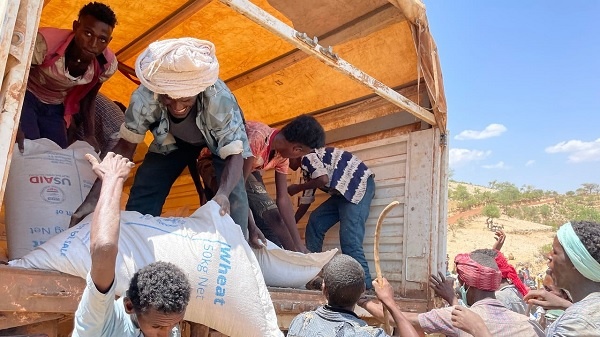
In response to growing needs in Ethiopia’s Tigray region, the United States is providing more than $149 million in additional humanitarian assistance, including more than $105 million from the United States Agency for International Development (USAID). The United States is the largest single donor of humanitarian aid to the Tigray response efforts, providing nearly $637 million since the conflict began.
USAID’s funding will address life-threatening hunger by providing more than 172,000 metric tons of wheat, yellow split peas, and vegetable oil—enough to feed five million people for nearly two months. This food is desperately needed and the Government of Ethiopia must allow it to reach Tigray. This assistance will also support case management for survivors of gender-based violence; training for social workers, medical staff, and community case workers; service centers to provide gender-based violence screenings and referrals; and safe spaces and psychosocial support for children affected by the conflict.
The U.S. is also deeply concerned about increasing tensions and escalations, including the Tigrayan People’s Liberation Front’s (TPLF) expansion into Afar and the Ethiopian government’s decision to mobilize additional regional militias. Such expansion is exacerbating an already grave humanitarian situation for civilians in the affected regions and putting at risk the stability of the Ethiopian state. All parties to the conflict need to take immediate steps to end hostilities, secure a negotiated ceasefire, facilitate the delivery of critically needed humanitarian assistance to those in need, and preserve the national unity and territorial integrity of Ethiopia. The United States urges both the Ethiopian government and the TPLF to embark immediately on discussions to achieve these critical objectives.
The reality on the ground is that humanitarians face a constant stream of bureaucratic delays, demands for additional approvals, and ongoing conflict. Aid workers and convoys have been rigorously searched and attacked. All parties to the conflict must ensure the security and safety of aid workers—fourteen of whom have already lost their lives while helping others. Even now, there are more than 200 trucks waiting for a web of approvals. With these delays and impediments, humanitarian aid cannot possibly reach the scale required to address the vast needs. In addition, humanitarians need electricity, telecoms, banking, and fuel deliveries to be restored in order to conduct their life-saving work. Fuel shortages are particularly concerning – as aid organizations delivering relief supplies run low on gas – leading hospitals and water pumps that rely on generators to stop functioning.
Even before these troubling developments, approximately 5.2 million out of six million people—or approximately 90 percent of the population in Tigray—were in need of humanitarian aid. USAID believes a famine may already be happening in Tigray, threatening the lives of hundreds of thousands of people. If humanitarian access does not vastly improve and the parties to the conflict do not pursue a political solution, the already catastrophic situation will get even worse.
For the latest updates on U.S. humanitarian assistance for the Tigray response, visit: Ethiopia | Humanitarian Assistance | US Agency for International Development.
Source: USAID
